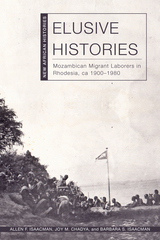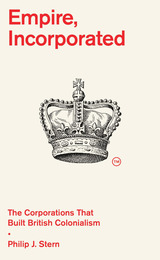6 books about Management & Leadership
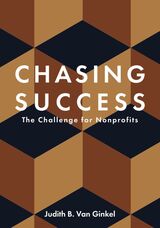
Chasing Success
The Challenge for Nonprofits
Judith Van Ginkel
University of Cincinnati Press, 2023
A study of nonprofit administration, using the organization Every Child Succeeds as an example.
Chasing Success follows the first twenty years of the organization Every Child Succeeds under the leadership of their former Executive Director turned author, Judith Van Ginkel. Every Child Succeeds is a regional nonprofit located in Cincinnati, Ohio that focuses on home visitation and support for parents from pregnancy through the first one thousand days of their newborn’s life. The organization was born in the 1990s out of widespread scientific evidence about the impacts of early childhood on development across the lifespan.
Chasing Success uses the story of Every Child Succeeds as a case study for readers interested in the changing landscape of nonprofit administration. With the benefit of Van Ginkel’s years of experience in nonprofit management, this book offers concrete lessons about developing a new nonprofit, utilizing research and best practices, learning to be adaptable, and being accountable to stakeholders. Van Ginkel also explores how changing policies and funding priorities for larger national nonprofits and the state and federal governments can impact how regional nonprofits work to achieve their missions, an often underappreciated and under-discussed reality for many smaller organizations around the country.
Chasing Success follows the first twenty years of the organization Every Child Succeeds under the leadership of their former Executive Director turned author, Judith Van Ginkel. Every Child Succeeds is a regional nonprofit located in Cincinnati, Ohio that focuses on home visitation and support for parents from pregnancy through the first one thousand days of their newborn’s life. The organization was born in the 1990s out of widespread scientific evidence about the impacts of early childhood on development across the lifespan.
Chasing Success uses the story of Every Child Succeeds as a case study for readers interested in the changing landscape of nonprofit administration. With the benefit of Van Ginkel’s years of experience in nonprofit management, this book offers concrete lessons about developing a new nonprofit, utilizing research and best practices, learning to be adaptable, and being accountable to stakeholders. Van Ginkel also explores how changing policies and funding priorities for larger national nonprofits and the state and federal governments can impact how regional nonprofits work to achieve their missions, an often underappreciated and under-discussed reality for many smaller organizations around the country.
[more]
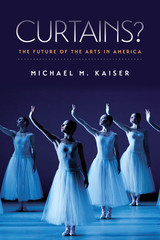
Curtains?
The Future of the Arts in America
Michael M. Kaiser
Brandeis University Press, 2015
In this clear-minded but sobering book, Michael M. Kaiser assesses the current state of arts institutions—orchestras; opera, ballet, modern dance, and theater companies; and even museums. According to Kaiser, new developments in the twenty-first century, including the Internet explosion, the death of the recording industry, the near-death of subscriptions, economic instability, the focus on STEM education in schools, the introduction of movie-theater opera, the erosion of newspapers, the threat to serious arts criticism, and the aging of the donor base have together created tremendous challenges for all arts organizations. Using Michael Porter’s model of industry structure to describe how industries evolve, Kaiser argues persuasively that unless steps are taken now, midsized performing arts institutions will have all but evaporated by 2035. Only the largest arts organizations will survive, with tickets priced for the very wealthy and programming limited to the most popular and lucrative productions. Kaiser concludes with a call to arms. With three extraordinary decades’ experience as an arts administrator behind him, he advocates passionately for risk-taking in programming and more creative marketing, and details what needs to happen now—building strong donor bases, creating effective boards, and collective action—to sustain the performing arts for generations to come.
[more]
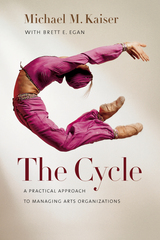
The Cycle
A Practical Approach to Managing Arts Organizations
Michael M. Kaiser and Brett E. Egan
Brandeis University Press, 2013
In the third book of his popular trilogy on creating and sustaining arts organizations, Michael Kaiser reveals the hidden engine that powers consistent success. According to Kaiser, successful arts organizations pursue strong programmatic marketing campaigns that compel people to buy tickets, enroll in classes, and so on—in short, to participate in the organization’s programs. Additionally, they create exciting activities that draw people to the organization as a whole. This institutional marketing creates a sense of enthusiasm that attracts donors, board members, and volunteers. Kaiser calls this group of external supporters the family. When this hidden engine is humming, staff, board, and audience members, artists, and donors feel confidence in the future. Resources are reinvested in more and better art, which is marketed aggressively; as a result, the “family” continues to grow, providing even more resources. This self-reinforcing cycle underlies the activities of all healthy arts organizations, and the theory behind it can be used as a diagnostic tool to reveal—and remedy—the problems of troubled ones. This book addresses each element of the cycle in the hope that more arts organizations around the globe—from orchestras, theaters, museums, opera companies, and classical and modern dance organizations to service organizations and other not-for-profit cultural institutions—will be able to sustain remarkable creativity, pay the bills, and have fun doing so!
[more]
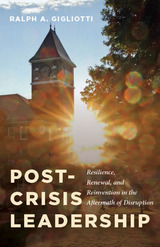
Post-Crisis Leadership
Resilience, Renewal, and Reinvention in the Aftermath of Disruption
Ralph A. Gigliotti
Rutgers University Press, 2025
Given the many pressures facing leaders across higher education, the work of crisis leadership remains an imperative for leaders at all levels. Attention tends to center on strategies for engaging in leadership both prior to and during crisis, often leaving the post-crisis period as an afterthought. This book introduces a research-informed framework for this critical, and often neglected, phase of crisis leadership. With an underlying commitment to values-based, principle-oriented, and people-centered practices, this framework consists of five leadership practices that are recognized as especially critical in the aftermath of crisis: (a) encourage learning, (b) inspire growth, (c) stimulate meaning-making, (d) pursue reinvention, and (e) advance renewal. Communication serves a critical role in each of the various dimensions of post-crisis leadership, and it is a communication orientation that can help to inform the paradoxes, processes, and patterns that arise during these periods of immense tension and, at times, transcendence.
[more]

Shaping Nursing Science and Improving Health
The Michigan Legacy
Shaké Ketefian, editor
Michigan Publishing Services, 2016
Shaping Nursing Science and Improving Health: The Michigan Legacy chronicles the growth and development of nursing research and scholarship, and the outstanding contributions made to the discipline and the profession of nursing in the United States and beyond by the School of Nursing, University of Michigan.
The work covers selectively the development of nursing science over a period of some thirty years which was undertaken by nursing faculty and the School’s PhD Alumni. The account of the strategic development of a program of research across bio-behavioral phenomena, health promotion/risk reduction, women’s health and nursing and health care systems is instructive. Substantive contributions have been made across the selected areas; of note also is the impact of translational science on health outcomes of individuals and communities. The accounts of the purposeful development of health informatics in nursing and leadership as scholarship are also highly developed. The book is a valuable contribution to the literature on how nursing research at Michigan is helping transform the lives of patients, families and communities.
The work covers selectively the development of nursing science over a period of some thirty years which was undertaken by nursing faculty and the School’s PhD Alumni. The account of the strategic development of a program of research across bio-behavioral phenomena, health promotion/risk reduction, women’s health and nursing and health care systems is instructive. Substantive contributions have been made across the selected areas; of note also is the impact of translational science on health outcomes of individuals and communities. The accounts of the purposeful development of health informatics in nursing and leadership as scholarship are also highly developed. The book is a valuable contribution to the literature on how nursing research at Michigan is helping transform the lives of patients, families and communities.
[more]
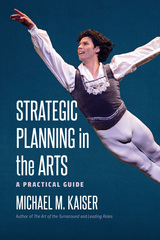
Strategic Planning in the Arts
A Practical Guide
Michael M. Kaiser
Brandeis University Press, 2018
Planning today is more important than ever. Both acquisition and allocation of resources are increasingly difficult for arts organizations as a result of emerging technologies, reduced arts education, aging donors, and the advent of new forms of entertainment. It is essential for arts organizations to take a coherent approach to these issues to remain vibrant over time. In fact, most arts organizations do periodically attempt some kind of planning exercise. But a review of hundreds of such plans suggests that most contain merely a wish list, rather than concrete plans for the future: “We will increase ticket sales!” is a common “strategy” expressed in too many arts plans. In the absence of details about how ticket sales will be increased, it’s an empty promise. In Strategic Planning in the Arts, Michael M. Kaiser, the former head of the Kennedy Center in Washington, DC, and an arts management guru, has produced a clear, concise guide for staff or board members of not-for-profit arts organizations who are responsible for developing, evaluating, or implementing plans. Relying on real-world cases and examples, Kaiser shows how to conceive, assess, and act on every part of the strategic plan, from the mission statement to the financial statement; from managing the board to marketing. Praise for Michael Kaiser: “A rich yet tidy cornucopia of solutions for the challenges facing the American arts scene.”—Washington Post
[more]
READERS
Browse our collection.
PUBLISHERS
See BiblioVault's publisher services.
STUDENT SERVICES
Files for college accessibility offices.
UChicago Accessibility Resources
home | accessibility | search | about | contact us
BiblioVault ® 2001 - 2025
The University of Chicago Press



